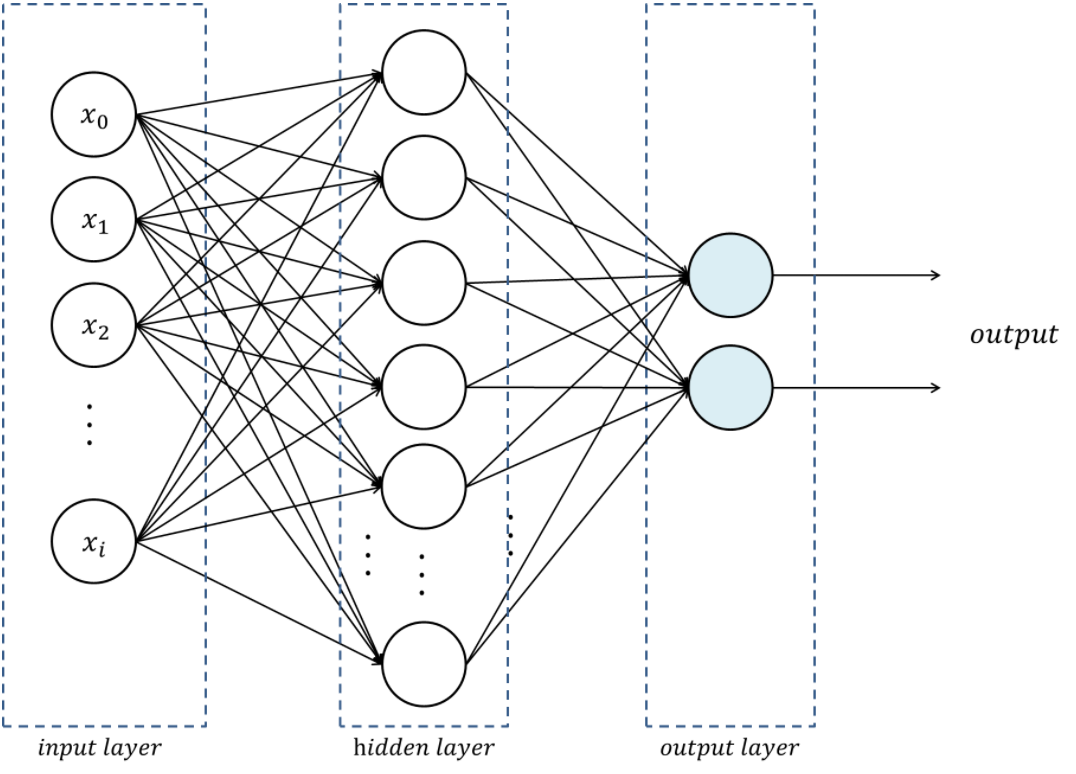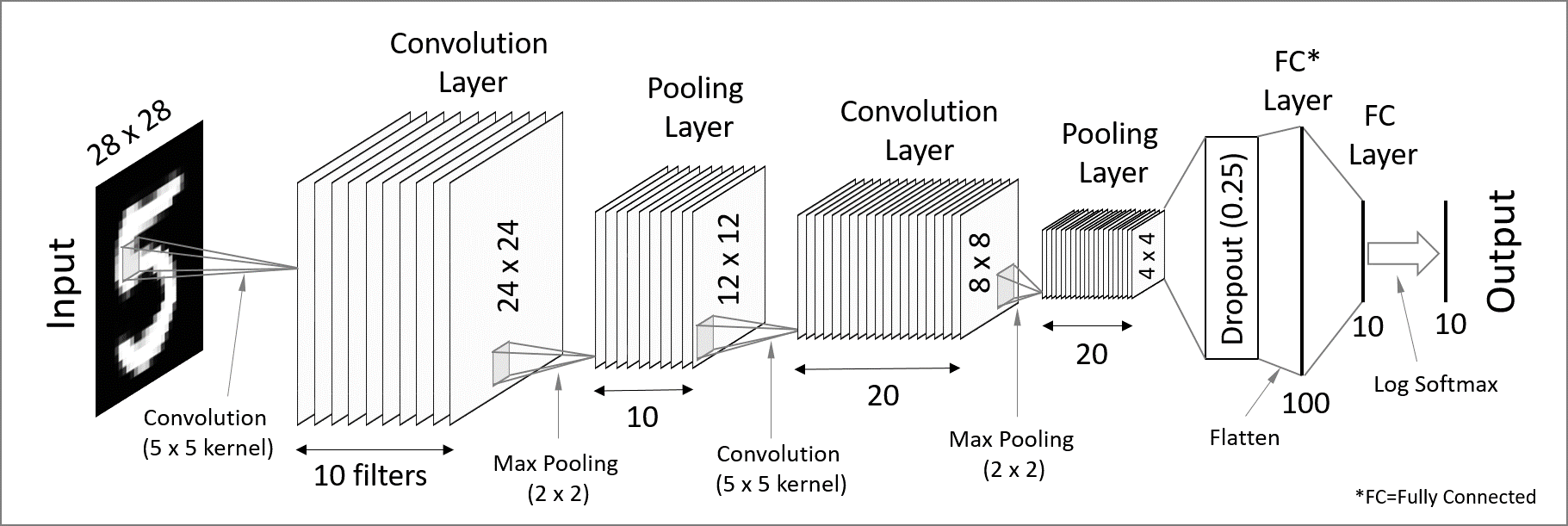Our first neural network
with  PyTorch
PyTorch
WestGrid Summer School
Marie-Hélène Burle
PyTorch’s packages
PyTorch comes with several packages that make working with neural nets easy.
In the previous lesson, we learnt about torch.autograd which allows automatic calculation of gradients during backpropagation.
This lesson introduces torch.nn and torch.optim. They are often imported with:
import torch.nn as nn
import torch.optim as optimtorch.nn.functional
The torch.nn.functional module contains all the functions of the torch.nn package. By convention, it is imported as F:
import torch.nn.functional as F
These functions include loss functions, activation functions, pooling functions … i.e. all the functions that are used in the building and training of a neural net. Since torch.autograd can be used on any callable object, you can also create and use your own functions.
Loss functions
In our previous lesson, we calculated a loss function manually with:
loss = (predicted - real).pow(2).sum()Loss functions
Within torch.nn.functional, you can select from a large range of loss functions:
binary_cross_entropyto calculate the binary cross entropy between the target and the outputbinary_cross_entropy_with_logitsto calculate the binary cross entropy between target and output logitspoisson_nll_lossfor Poisson negative log likelihood loss
…
Go to the documentation for a full list.
Loss functions
Example:
If we want to use the negative log likelihood loss function, we can run:
loss = F.nll_loss(predicted, real)Activation functions
As mentioned earlier, torch.nn.functional also has activation functions.
Examples:
ReLU
can be called with torch.nn.functional.relu()
Softmax
with torch.nn.functional.softmax()
torch.nn.Module
torch.nn.Module is the base class for all neural network modules. To build your model, you create a subclass of torch.nn.Module:
class Net(nn.Module):
def __init__(self):
super(Net, self).__init__()
Python’s class inheritance gives our subclass all the functionality of torch.nn.Module while allowing us to customize it.
torch.nn.Module
Then, you can create submodules and assign them as attributes:
class Net(nn.Module):
def __init__(self):
super(Net, self).__init__()
self.fc1 = nn.Linear(784, 128)
self.fc2 = nn.Linear(128, 10)
If this Python syntax is obscure to you, you should have a look at the answers to this question
, as well as this answer to a similar question
.
torch.nn.Module
Finally, you define the method for the forward pass in your subclass of torch.nn.Module:
class Net(nn.Module):
def __init__(self):
super(Net, self).__init__()
self.fc1 = nn.Linear(784, 128)
self.fc2 = nn.Linear(128, 10)
def forward(self, x):
x = torch.flatten(x, 1)
x = self.fc1(x)
x = F.relu(x)
x = self.fc2(x)
output = F.log_softmax(x, dim=1)
return outputtorch.nn.Module
Now, we have our network architecture, so we can create an instance of it:
model = Net()
Even better, we can send it to our device of choice (CPU or GPU):
model = Net().to(device)torch.optim
The package torch.optim contains classic optimization algorithms such as optim.SGD(), optim.Adam(), or optim.Adadelta().
To use them, you define an optimizer with one such algorithms:
optimizer = optim.Adadelta(model.parameters(), lr=1.0)
Then use:
optimizer.zero_grad() # resets the gradient to 0
optimizer.step()Let’s try to build a NN
to classify the MNIST
Our script
ssh into the training cluster:
ssh userxxx@uu.c3.ca
Create a directory for this project and cd into it:
mkdir mnist; cd mnist
Start a first Python script:
nano mlp.py # use the text editor of your choiceLet’s start with an MLP
Let’s start with the simplest possible neural net: a multilayer perceptron (MLP)
.
It is a feed-forward (i.e. no loop), fully-connected (i.e. each neuron of one layer is connected to all the neurons of the adjacent layers) neural network with a single hidden layer.

Load all the modules we need
import torch
import torch.nn as nn
import torch.nn.functional as F
import torch.optim as optim
from torchvision import datasets, transforms
from torch.optim.lr_scheduler import StepLROur model
class Net(nn.Module):
def __init__(self):
super(Net, self).__init__()
self.fc1 = nn.Linear(784, 128)
self.fc2 = nn.Linear(128, 10)
def forward(self, x):
x = torch.flatten(x, 1)
x = self.fc1(x)
x = F.relu(x)
x = self.fc2(x)
output = F.log_softmax(x, dim=1)
return outputOur training function
def train(model, device, train_loader, optimizer, epoch):
model.train()
for batch_idx, (data, target) in enumerate(train_loader):
data, target = data.to(device), target.to(device)
optimizer.zero_grad()
output = model(data)
loss = F.nll_loss(output, target)
loss.backward()
optimizer.step()
if batch_idx % 10 == 0:
print('Train Epoch: {} [{}/{} ({:.0f}%)]\tLoss: {:.6f}'.format(
epoch, batch_idx * len(data), len(train_loader.dataset),
100. * batch_idx / len(train_loader), loss.item()))Our testing function
def test(model, device, test_loader):
model.eval()
test_loss = 0
correct = 0
with torch.no_grad():
for data, target in test_loader:
data, target = data.to(device), target.to(device)
output = model(data)
test_loss += F.nll_loss(output, target, reduction='sum').item() # sum up batch loss
pred = output.argmax(dim=1, keepdim=True) # get the index of the max log-probability
correct += pred.eq(target.view_as(pred)).sum().item()
test_loss /= len(test_loader.dataset)
print('\nTest set: Average loss: {:.4f}, Accuracy: {}/{} ({:.0f}%)\n'.format(
test_loss, correct, len(test_loader.dataset),
100. * correct / len(test_loader.dataset)))Our training settings
def main():
epochs = 3
torch.manual_seed(1)
device = torch.device('cpu')
transform = transforms.Compose([
transforms.ToTensor(),
transforms.Normalize((0.1307,), (0.3081,))
])
train_data = datasets.MNIST(
'~/projects/def-sponsor00/data',
train=True, download=True, transform=transform)
test_data = datasets.MNIST(
'~/projects/def-sponsor00/data',
train=False, transform=transform)
train_loader = torch.utils.data.DataLoader(train_data, batch_size=64)
test_loader = torch.utils.data.DataLoader(test_data, batch_size=1000)
model = Net().to(device)
optimizer = optim.Adadelta(model.parameters(), lr=1.0)
scheduler = StepLR(optimizer, step_size=1, gamma=0.7)
for epoch in range(1, epochs + 1):
train(model, device, train_loader, optimizer, epoch)
test(model, device, test_loader)
scheduler.step()Our training settings
We will only run our model over 3 epochs to save time. Obviously, you normally would run it much longer.
We are using CPUs.
We will use the Adadelta algorithm as optimizer.
Running the model
Finally, we run the whole model by running main():
main()Let’s try our script
Slurm script
Write an mlp.sh script:
#!/bin/bash
#SBATCH --time=0:5:0
#SBATCH --cpus-per-task=1
#SBATCH --mem=3G
#SBATCH --output=%x_%j.out
#SBATCH --error=%x_%j.err
# Activate your virtual env
source ~/env/bin/activate
# Run your Python script
python ~/mnist/mlp.pySubmit the job to Slurm
sbatch mlp.sh
Monitor its status with:
sqOn to a CNN
Let’s step this up and build a CNN. Convolutional Neural Networks are particularly well-suited to image data.
The figure below is not an exact scheme of the model we will build, but it represents a similar model made of convolution, pooling, and fully-connected layers.

CNN script
Our new script will be very similar to mlp.py: we will only change the model architecture. So you can copy mlp.py and edit the copy:
cp mlp.py cnn.py
nano cnn.pyOur new model architecture
class Net(nn.Module):
def __init__(self):
super(Net, self).__init__()
self.conv1 = nn.Conv2d(1, 32, 3, 1)
self.conv2 = nn.Conv2d(32, 64, 3, 1)
self.dropout1 = nn.Dropout2d(0.25)
self.dropout2 = nn.Dropout2d(0.5)
self.fc1 = nn.Linear(9216, 128)
self.fc2 = nn.Linear(128, 10)
def forward(self, x):
x = self.conv1(x)
x = F.relu(x)
x = self.conv2(x)
x = F.relu(x)
x = F.max_pool2d(x, 2)
x = self.dropout1(x)
x = torch.flatten(x, 1)
x = self.fc1(x)
x = F.relu(x)
x = self.dropout2(x)
x = self.fc2(x)
output = F.log_softmax(x, dim=1)
return outputSlurm script
Write a cnn.sh script. We need more time here as a CNN will take longer to run.
#!/bin/bash
#SBATCH --time=0:15:0
#SBATCH --cpus-per-task=1
#SBATCH --mem=3G
#SBATCH --output=%x_%j.out
#SBATCH --error=%x_%j.err
# Activate your virtual env
source ~/env/bin/activate
# Run your Python script
python ~/mnist/cnn.pySubmit the job to Slurm
sbatch cnn.sh
Monitor its status with:
sq